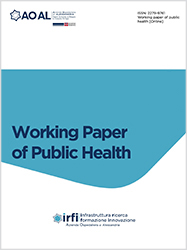Translocation of intestinal bacterial flora: its role in sepsis and HIV infection
Accepted: 11 July 2016
All claims expressed in this article are solely those of the authors and do not necessarily represent those of their affiliated organizations, or those of the publisher, the editors and the reviewers. Any product that may be evaluated in this article or claim that may be made by its manufacturer is not guaranteed or endorsed by the publisher.
Bacterial translocation is the invasion of viable and non-viable germs, and their bioproducts, through the mucosa of the intestine to mesenteric lymph nodes, spleen, liver, peritoneum. It occurs frequently in patients with intestinal occlusion and is the cause of subsequent sepsis, but, as demonstrated by many experimental studies, at each type of "injury" the intestine itself becomes a "target organ" and its dysfunction leads to the alteration of its permeability, facilitating the phenomena of bacterial translocation and absorption of endotoxins and other debris. The factors that can stimulate bacterial translocation are the immunodeficiencies and immunosuppression of the host, alterations in the "ecological" balance of the intestine, the permeability of the mucosal barrier, obstructive jaundice, stress.
PAGEPress has chosen to apply the Creative Commons Attribution NonCommercial 4.0 International License (CC BY-NC 4.0) to all manuscripts to be published.

 https://doi.org/10.4081/wpph.2014.6735
https://doi.org/10.4081/wpph.2014.6735




